The content of the article
Nasal lavage is one of the most necessary, useful and effective procedures in the fight against many diseases. Rinsing the nose can seem like a pretty complicated treatment, although there is really nothing complicated about it. If done correctly, salt water will relieve nasal congestion and prevent new symptoms from appearing. Rinsing the nose is absolutely harmless, so washing the nose is recommended even for children and pregnant women. In this article, we will try to understand the useful properties of this procedure, get acquainted with the methods of washing the nose, and also learn how to properly prepare a solution for the procedure.
The benefits of salted washes
Why is saline most often used for washing? You can wash your nose with decoctions of herbs, antibacterial compounds, pharmacy saline solutions, as well as diluted juice of some plants and vegetables. However, salt water is the most common and popular solution for washing the nose. It's all about the safety of this composition. With some diseases of the ENT organs, it is impossible to rinse the nose with special medicines or juices, but salt water will not harm anyone. In addition, to prepare such a composition does not need special ingredients at all - salt and water are in every home. But how does salt water affect our bodies?
- Rinsing the nose with salt water is very effective for nasal congestion, runny nose and active mucus secretion. Salt water removes infected mucus from the nasal passages, relieves swelling, disinfects and rinses the sinuses. It is very effective for sinusitis, frontal sinusitis and other inflammations. After such washing, the mucus becomes much smaller, breathing opens.
- Rinsing the nose with salt water is very useful for allergies. When an allergen gets on the nasal mucosa, an active reaction of the body begins - a person sneezes, coughs, tears and snot flow from him - so the mucosa tries to wash off a foreign particle from its surface. Rinsing helps to flush the allergen quickly and effectively - after the procedure, the symptoms of allergies quickly disappear.
- The nose is often washed as a preventative measure. In the cold season, a large congestion of people is the likelihood of infection with SARS. If you rinse your nose after close contact with a sick person, you can wash off those particles of the virus that got on the mucous membrane, but have not yet had time to absorb into the blood. If you wash your baby’s nose after visiting kindergarten, the likelihood of colds is sharply reduced. The same should be done for pregnant women after visiting the clinic and other crowded places. Washing is a safe way to protect your body from colds, because the immunity of pregnant women and children is very weak.
- Washing the nose not only helps to remove the mucus, but also dilutes it. It is very effective in purulent processes.
According to the law of physics, salt water draws mucus outward, forcing the capillaries to work independently. If you regularly rinse your nose with salt water, a runny nose will go much faster.
How to make salt water to wash your nose
A properly prepared solution is the basis of a competently performed procedure. The fact is that too salty or too hot water can bring discomfort to the mucous membrane and a burning sensation. To prepare the solution, you need to take a glass of water - this volume is usually enough for one procedure. Water should be boiled or filtered.In no case do not use running water - it may contain chlorine, which dries the mucosa. The salt concentration should be like this - about 2 grams of salt per 250 ml of liquid. This is about a pinch of salt in a glass of water. Water should not be hotter than 38 degrees - that is, approximately comfortable for the body. Instead of simple salt, it is better to take sea salt. After preparing the solution, you can proceed directly to the procedure.
How to rinse your nose with a kettle
Rinsing the nose can be carried out in various ways, but the classic and optimal method is to use a special teapot with a thin and mobile nose. It is specifically designed for this procedure. If such a teapot is not at hand, you can use the most ordinary small-sized teapot that you have at home.
- Rinsing should be done over a sink, bathtub or basin.
- Be very careful - if the nose is so blocked that it does not breathe, flushing can be dangerous, since enlarged adenoids block the fluid passage between the nasal passages and water can enter the middle ear. If the nose is blocked, vasoconstrictor drops should be instilled into the nose before the procedure. And only when the nasal breathing opens, you can start flushing.
- Pour the cooked composition into the kettle and bend over the sink. Attach the spout of the teapot tightly to one nostril, for example, to the right. Carefully begin to turn your head to the right so that the water begins to fill in the right nostril, and exit the left. You may not succeed the first time, however, in order to understand the principle of action, you need to repeat the procedure several times.
- During the procedure, you need to hold your breath so that water does not get into your mouth.
- After you have washed one nostril, be sure to carry out the procedure from the second nostril.
- After washing, you need to blow your nose well, without pinching your nostrils. After that, thoroughly dry with a towel, rinse and disinfect the kettle.
After washing, you can’t go outside for a few more hours, because the mucous membrane at this time is very vulnerable and cold air can harm it.
How else can I rinse my nose?
It’s not necessary to use a kettle to rinse your nose; moreover, some people cannot wash their nose this way. Here are some more ways to rinse your nose.
- The easiest way to flush your nose safely is to draw in the salt water of your own nostrils. To do this, draw water into the palm of your hand and attach it to the nostril (you need to hold the second with your finger). Then, with a sharp movement, inhale to draw in the salt water. Repeat the procedure with the second nostril.
- It is possible to supply water under pressure with a syringe without a needle, syringe or plastic bottle (you need to make several holes on the lid). This is also a very effective way to rinse. However, the pressure should be moderate so that water does not get into the middle ear.
- Another way to rinse your nose is in the ENT office. The special apparatus, which is also called the “cuckoo,” is an assembly with tubes in which a vacuum is formed. The patient is placed on his back, his head is slightly thrown back. Before that, vasoconstrictor drops are dripped into the nose. A saline solution flows into one nostril, and a vacuum apparatus draws water along with mucus from the second nostril. During the procedure, you need to say "Ku-ku" - when pronouncing these sounds, the larynx is located so that water does not enter the esophagus. Proetzu nose washing method provides high-quality and professional nose washing. Effective for young children who cannot blow their nose on their own.
These are the main ways to wash your nose. Which one to choose is up to you.
How to rinse your baby’s nose
Washing the nose of a child is a very important point in his hygiene.Timely washing done will allow to suppress the development of a runny nose on the vine, contributes to recovery from colds. After all, rinsing the nose, drinking plenty of fluids and moisturizing the air are the main medicines for SARS.
Rinse the children’s nose with a teapot only from 3-4 years, when they begin to understand the meaning of the procedure. But infants should be washed with a pipette. To do this, you can use saline or the same salt water. Turn the baby on a barrel and drop two drops of washing solution into each nostril of the baby. After this, you need to wait a while, so that the mucus ceases to be viscous, and the crusts are slightly soaked. Now it’s important to remove the mucus from the nose. Since the baby cannot blow its nose, this can be done with a nasal aspirator. Modern models are very convenient and effective - they quickly, efficiently and painlessly clean the nose of accumulated mucus. If there are hard crusts, they are easy to remove with a cotton swab.
After this, drugs should be instilled into the nose (if prescribed by a doctor), because they work much better if applied to a clean mucosa. Act in this order - softening with water, removing mucus and using medication. And a runny nose will pass in a few days.
You can rinse your nose during an illness 2-3 times a day, until acute symptoms in the form of nasal congestion and mucus flow are relieved. However, remember that nose washing also has contraindications - any seals and formations in the nose, obstruction of the nasal passages, otitis media, nosebleeds and curvature of the nasal septum. Before the procedure, you must consult with your doctor.
However, remember that everything is good in moderation. Washings that are too frequent can be harmful, as salt water flushes away the natural protective layer of mucus, which performs important functions in the body. The nose should be washed at the first sign of a cold, after a stay in a crowded place (clinic, playground), as well as with various sinusitis and sinus inflammation. And then the flushing will be a true friend and an indispensable assistant in the fight against the common cold.
Video: how to rinse your nose

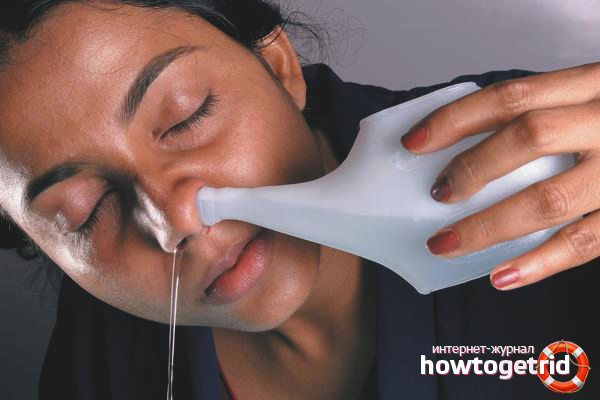
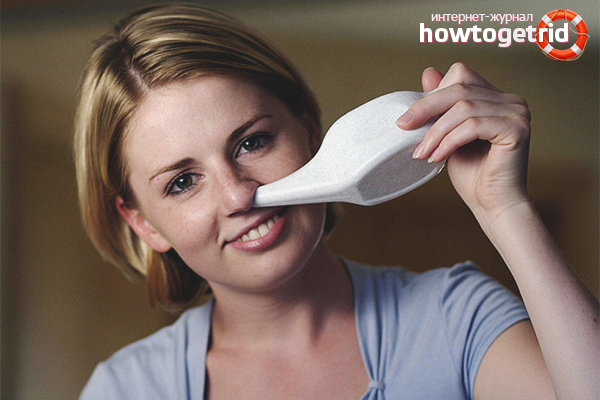
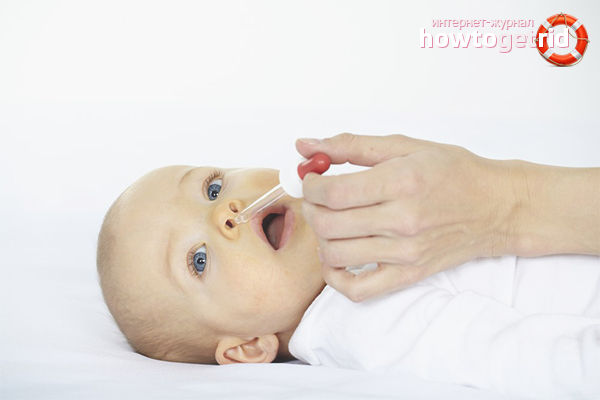




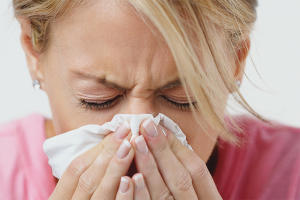
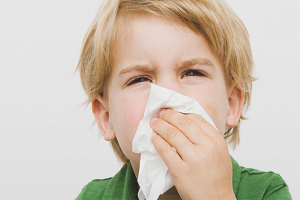

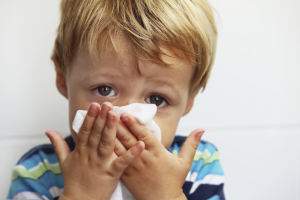
Submit